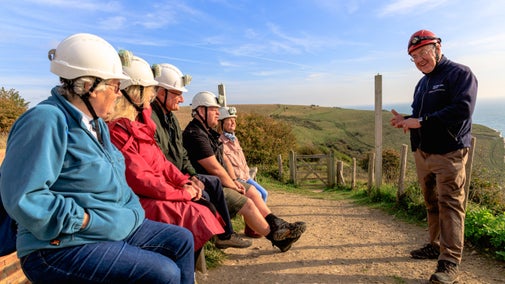
Become a member
Join today and help protect nature, beauty and history – for everyone, for ever. Enjoy access to more than 500 places with National Trust membership.
Magnificent coastal site overlooking the English Channel
Langdon Cliffs, Upper Road, Dover, Kent, CT16 1HJ

Our directions and parking information will help you get a great start to your visit to the White Cliffs, Fan Bay Deep Shelter and South Foreland Lighthouse.

Explore Fan Bay Deep Shelter, the sound mirrors and gun emplacement in an immersive, hard-hat and head torch tour with our expert, friendly guides.

Striking and historical lighthouse high on The White Cliffs of Dover

Map of the White Cliffs of Dover site showing key features and footpaths
The White Cliffs of Dover and South Foreland Lighthouse are two pawprint-rated places. Find out about bringing your dog to the cliffs and the lighthouse, and what to watch out for to make sure you have a safe and enjoyable visit.

Stop for freshly made refreshments with a view at the famous White Cliffs of Dover. Browse the shop for souvenirs, gifts and items from local makers.

Discover the work that goes into conserving the diverse habitats at the White Cliffs and how Exmoor ponies and cattle lend a vital helping hand in our work to deliver climate action.

Interested in getting involved at the White Cliffs of Dover? Find out about becoming a volunteer at this special place.


Join today and help protect nature, beauty and history – for everyone, for ever. Enjoy access to more than 500 places with National Trust membership.